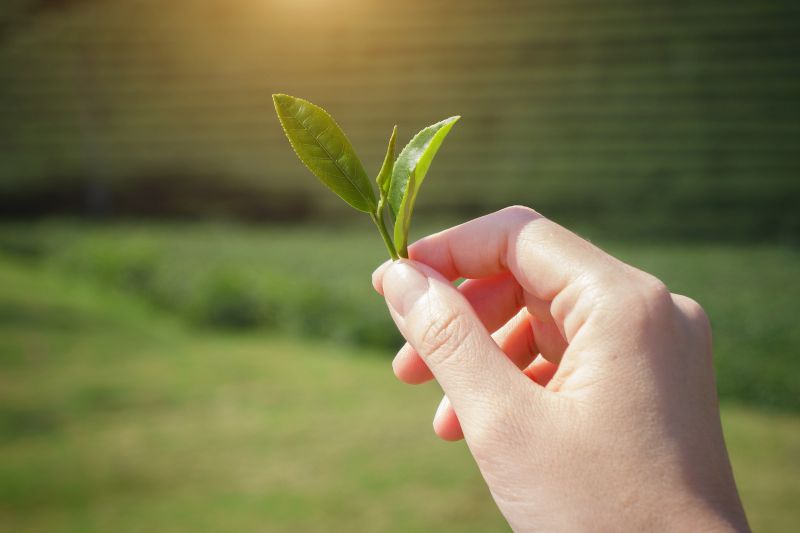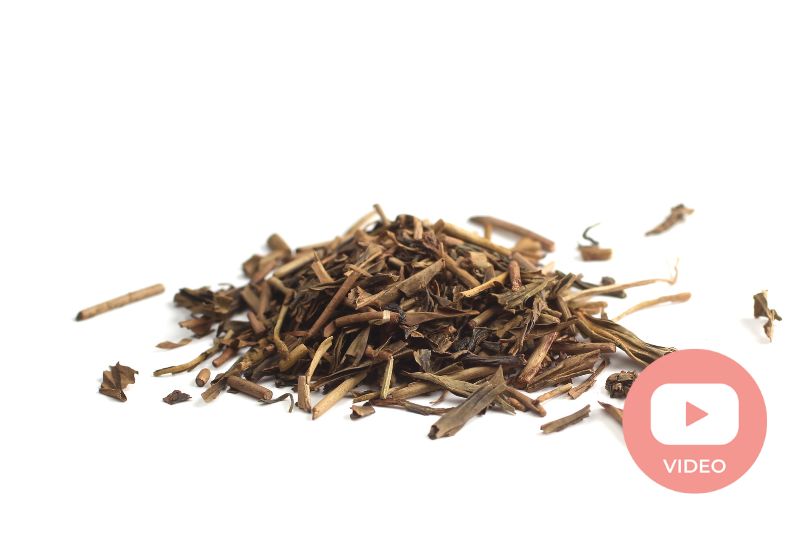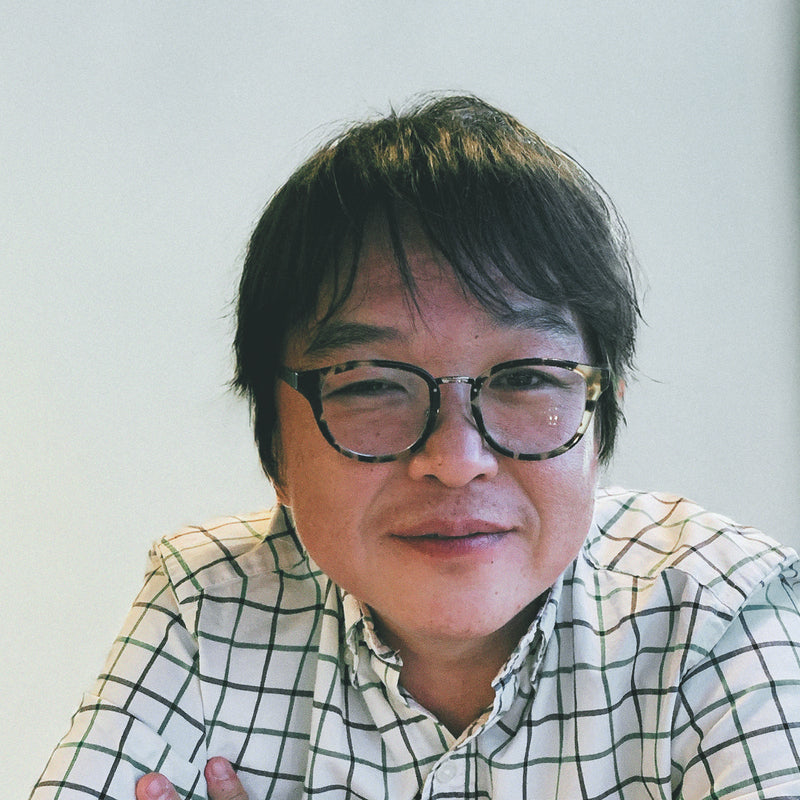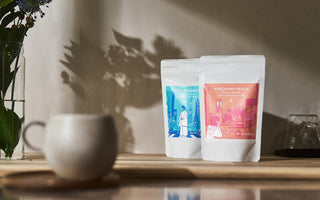The Japanese tea industry is facing a huge problem.
This problem is hitting many of the respected tea farmers who have been in the industry for decades or even centuries.
The problem is that Japanese people are getting old.
In particular, tea drinkers in Japan are getting old. We will show you why the green tea industry is facing the problem and a story of how one tea farmer is trying to combat the problem today.
Behind this demographic shift is a cascade of pressures on the entire tea ecosystem. Fewer young people are staying in rural areas to inherit family fields, so many small gardens lack successors and some plots are left fallow or consolidated. Younger consumers increasingly choose coffee, energy drinks, and sweetened beverages—and even when they pick tea, it’s often ready-to-drink bottles from convenience stores, which doesn’t necessarily support small growers of loose-leaf sencha. Price competition from overseas teas and the high costs of maintaining Japan’s premium cultivation methods add further strain. Labor shortages and unpredictable weather round out the challenge. In short, an aging customer base is the visible tip of a deeper structural problem facing Japanese tea.
Japanese tea drinkers are getting old
The average age of a Japanese green tea drinker is said to be 55 years old. In 2018, the Japanese population had the second highest median age in the world next to Monaco. Based on 2014 estimates, 33% of the Japanese population is above the age of 60.
Green tea is typically enjoyed by the older generation in Japan, and younger populations tend to be favoring other kinds of drinks such as coffee, soda and other sweet drinks, including fruit juice.
If you stop on any corner in Tokyo, the self-serving vending machines show you the truth of this favoring. Although green tea is still the most common beverage in Japan, when you stop at stations such as Harajuku where the younger generation tends to hang out more, you see lines of “sweet drinks” in the vending machines. (I wrote a comprehensive article about vending machine culture and green tea trend in Japan here.)
There is even a word for this in Japan now. Ochabanare (お茶離れ), which literally means “leaving tea trend,” which describes young people leaving the culture and drinking of tea.
This generational divide is more than just a shift in taste—it represents a potential cultural loss. Green tea has long been tied to hospitality, wellness, and even spirituality in Japan, but younger Japanese are growing up without daily exposure to these traditions. Many rely on bottled teas or coffee shop drinks instead of learning how to brew loose-leaf sencha at home. This gap in practice means fewer people are developing the knowledge and habits that sustain tea culture, leaving not only farmers but also the country’s centuries-old customs vulnerable to fading away with the older generation.

Japanese tea farmers are getting hit by the aging problem
Due to the younger generation not drinking green tea, consumption of green tea in Japan has been decreasing year after year.
As of 2018, Japan is the eighth largest tea producer in the world (88900 tons/year); however, tea farming itself has unfortunately decreased in recent years.
According to statistics released by the Japanese Ministry of Agriculture and Forestry in 2016, the area used for tea farming has decreased from 46200 hectares in 2011 to 43100 hectares in 2016. Beyond the shrinking farmland, the industry is also grappling with the realities of an aging farming population. The average age of Japanese tea farmers is now well over 65, and many do not have successors willing to take over the demanding work. Younger generations are drawn to urban careers that are perceived as more stable or lucrative, leaving rural areas with fewer hands to maintain traditional cultivation practices. As mechanization only partially solves these issues—since high-quality teas often require careful handwork—the decline in both land and labor threatens not just production volume, but also the ability to sustain premium methods that distinguish Japanese green tea on the global stage. That is a 7% decrease in just 5 years. This is said to be due to multiple reasons:
- Imports of tea from other countries such as China is increasing, reducing the price of tea.
- Also, farming in general is lacking young labor forces. Farming is viewed as not “trendy” among the young population, causing a reduction in the labor force.
- The younger generation not drinking green tea is surely another main reason for this decline.
How Japan is losing its culture and tradition
Since tea was introduced to Japan from China in the 7th century, a unique tea culture has evolved in Japan. (Read more about unique Japanese tea culture in my other article.) Tea was initially valued as medicine due to its health benefits and was only available to the rich. Because tea was valued so highly and such a novel product, a unique culture evolved around tea in Japan; a good example is tea ceremonies which were practiced initially among high-class and rich people.
Because of this novel status, tea farmers have been one of the most respected farmers in Japan for a very long time. Anywhere or any time in history where there are more resources, more inventions happen. A variety of different cultivation methods have evolved in tea industries in Japan over time to get the best tea available to the consumers. One of the most well-known examples of this is Matcha.
Matcha is cultivated by shading tea before harvesting, which increases many health-beneficial chemicals by basically “hungering” the tea plant to crave more sunlight. (Read more about matcha trivia here.)
Another example of such cultivation method is the Chagusaba method( 茶草場). This is a labor-intensive cultivation method commonly practiced over centuries in Shizuoka prefecture where dirt around tea leaves is covered by shrubs of different plants to protect roots from freezing in winter and making the tea taste sweeter. (Try green tea grown by Chagusaba method.)

Though this cultivation method is being designated as a Globally Important Agricultural Heritage System by the United Nations, due to the above-mentioned reasons, farmers are not able to sustain the method. (Read more about Chagusaba method.)
What makes this decline especially troubling is that Japanese tea is not just an agricultural product—it is a living heritage that connects generations. Rituals such as the tea ceremony (chanoyu), the seasonal appreciation of fresh harvests (shincha), and even the everyday act of brewing loose-leaf tea at home embody values of mindfulness, respect, and hospitality. When fewer people practice these traditions, the knowledge tied to preparation, seasonal nuance, and appreciation of flavor risks being lost. In many rural areas, local festivals and community gatherings have historically revolved around tea, meaning that the fading of tea culture is also the fading of regional identity. Without active efforts to preserve and adapt these practices for the younger generation, Japan risks losing not just a crop, but a cornerstone of its cultural soul.


Meet the Innovator of Japan’s Tea Industry
Though faced with many challenges, Japanese tea farmers are finding new ways to survive and thrive. Arahataen Green Tea Farms has been one of the most innovative leaders of tea farms in Japan, and very well respected by peer tea farmers.
Arahataen has always been the first brave tea farm to try out new systems in the tea industry. For example, they were the first farm to use a deep steaming method (Fukamushi 深蒸し茶) back in the 60s to combat the problem of harder tea leaves due to the excessive sun in the region. By successfully steaming tea for longer durations, they were able to introduce better tasting tea which was exposed to more sunlight. (Read more about deep steaming here.)
Arahataen was one of the first ones in Japan to adopt “mail subscription” services when TV shopping became popular in Japan, and of course one of the first to utilize the “online subscription” system. This made them the tea company with the highest online sales in Japan in 2016.
What sets Arahataen apart is not only their willingness to adopt new methods, but their ability to anticipate shifts in consumer behavior and technology. While many traditional farms hesitated to change, Arahataen consistently experimented with ways to connect directly with customers—whether through subscription models, innovative packaging, or collaborations with local communities. Their openness to blending tradition with modernization has made them a blueprint for how legacy tea farms can adapt in a rapidly changing marketplace. By balancing respect for centuries-old cultivation methods with bold steps into e-commerce and product development, they’ve shown that innovation can be rooted in tradition without losing authenticity.
How A Japanese Tea Farmer is trying to revolutionize the tea industry
Arahataen’s newest and biggest challenge now is the problem every industry is facing in Japan: Age. With young people leaving tea drinking and the tea culture, what can a company do to solve the problem which is getting more serious every year?
Mr. Arahata’s idea was very simple. “Let’s ask the young people about it.”
Although much of the population of Japan is aging, there are young kids who are full of energy for a better and brighter future. Mr. Arahata’s idea was to get help from the “future” of Japan.
This approach marked a radical shift in thinking within the traditional tea industry. Instead of trying to persuade younger generations to adopt old habits, Mr. Arahata chose to listen to their preferences and incorporate their voices directly into product development. By treating youth not just as future consumers but as collaborators, he reframed the challenge of aging demographics into an opportunity for innovation. This strategy also helped bridge the generational gap, giving students a sense of ownership over Japan’s tea culture while showing them that heritage industries can evolve to meet modern lifestyles.
Meet Young Tea Innovators of the Tea Farms’ Future
Unlike other countries, such as the USA, Japan has many high schools and junior high schools that specialize in a specific industry. Many kids study to get into the high school of their dreams, which usually leads them into a university specializing in the industry. If a kid knows what they want to do in the future, Japan is a very good place for them because they get exposure to that industry from a very early age. (Side note: In fact, I also went to an architect-specialized school (Shibaura Institute of Technology Junior and Senior High School) for my junior high school and part of high school before I came to the USA.)
Arahataen approached the local high school specializing in business industry, Shizuoka Commercial High School (静岡商業高等学校). The school had 844 students in 2017 and is well connected to the local farming industry from a commercial perspective.
By involving students from Shizuoka Commercial High School, Arahataen tapped into a generation that is not only tech-savvy but also highly attuned to consumer trends. These students bring fresh perspectives shaped by social media, convenience-driven lifestyles, and exposure to global food and beverage cultures. Their ability to analyze market demands, brainstorm creative product ideas, and think in terms of branding and promotion gives the tea farm insights that traditional farmers might overlook. For the students, the collaboration offers real-world experience beyond textbooks, connecting business studies with tangible industry challenges while instilling a sense of pride in supporting their region’s agricultural heritage.

Students from Shizuoka Commercial High School
How the Oldest Tea Farm in the Region Partnered with Youngest Innovators of the Future
With a partnership with Shizuoka Commercial High School, Arahataen Tea Farm became the teacher of a course for the 8th-grade students for a period of one year.
Arahataen’s job as a teacher is to teach kids the basics of tea farming, harvesting, and production. Students were exposed to the real everyday life of the tea industry for one year. As noted above, Arahataen is one of the oldest tea farms of the region, and they handle not only farming but also packaging, distribution, and marketing. Kids were very excited to get hands-on experience in growing tea and distributing into the mass market of the world.
As part of Curriculum, the goal of the year-long course was to find a way to market the tea to the youth.
After a number of brainstorming sessions, a student came up with the idea to add “something” to the tea so that young people will like it. Their idea was to look for ingredients by learning from drinks popular among students. They listed drinks they usually drink. The list included drinks such as Cokes, fruit juice, Calpis (popular Japanese soft drink) and cocoa drinks. What was common among all the products were “sweet” and often “sour.”
After the brainstorming sessions, with help from actual production facilities, students prototyped a number of different drinks and snacks. They shared the prototyped products and surveyed the entire region’s high schools to see which ones they liked the most.
This experiment was groundbreaking because it allowed students to move beyond theory into genuine product innovation. By testing prototypes across different schools, the project mimicked a full market research cycle—idea generation, product development, consumer testing, and feedback. For Arahataen, it provided valuable insights into the preferences of younger generations, while for the students it was a chance to see their ideas come to life and influence a centuries-old industry. The process also helped demystify tea for youth, transforming it from something “traditional and old-fashioned” into a beverage that could be modern, customizable, and fun. In many ways, the project became a bridge, not only between generations, but also between tradition and modern consumer culture.
The result of this one-year journey was: Green tea with Lemon.

Students trying to come up with ideas for new tea product

A student trying out prototype tea

The event at school to present the new product developed over one year of effort
Meet Green Tea with Lemon and Mikan
With help from Arahataen’s wide and strong connections with local farms, students were able to source local lemon to add to the tea. Arahataen decided to use one of the most premium teas grown by the Chagusaba method (see above about this method) with sugarcane. They have powdered the premium tea so that it is easier to mix and drink with cold or hot water, as the kids suggested, since most of them don’t have tea kettles at home.
Powdered tea (Konacha粉茶) is usually made with the non-prime part of green tea. It is usually the result of using the “leftover” tea so that all parts of tea can be sold. Arahataen did not want to go with low-quality tea. Therefore, they powdered the most premium crops to preserve the healthiest and best part of the tea.
They have also partnered with a local orange farm of Japanese Orange Mikan to come up with the second product of the line called Green tea with Japanese Orange. Mikan is also known as Japanese Citrus which is very similar to mandarin.
Since the introduction of the product, both products have been catching boom in Japan now and are featured by national TV shows as well.
The success of Green Tea with Lemon and Green Tea with Mikan demonstrates how traditional industries can evolve when they embrace collaboration and creativity. By using high-quality tea with familiar, fruity flavors, the products appealed to young consumers without sacrificing authenticity or health benefits. The powdered format also tapped into modern lifestyles, offering convenience that aligns with the way busy students and young professionals consume beverages today. What began as a classroom project quickly turned into a model for how Japan’s tea culture could adapt—proving that when heritage and innovation come together, even an aging industry can find new life and relevance in the modern market.
Conclusion
In the face of Japan’s aging population and declining tea consumption, the story of Arahataen Tea Farm shows that tradition and innovation can coexist to secure the future of a centuries-old industry. By partnering with young students, embracing fresh ideas, and reimagining tea in ways that appeal to modern tastes, they have proven that cultural heritage does not have to fade with time—it can adapt, thrive, and even inspire the next generation. The challenge of age, once seen as a threat, is being transformed into an opportunity to pass down not only the love of tea but also the spirit of creativity and resilience that defines Japan’s tea culture.
You can also try this in the USA from the Japanese Green Tea Company here:
Green Tea with Lemon:
https://www.japanesegreenteain.com/collections/matcha/products/green-tea-with-lemon
Green Tea with Japanese Orange (Mikan):
https://www.japanesegreenteain.com/collections/matcha/products/green-tea-with-japanese-orange
What Do Americans Say About the Tea?
Our friend, Lisa, from My Tea Vault has asked random people at local Cafe to see the reaction. Below is a video of people trying this tea.
Get Free Bonus Books

Sign up for free to the Green Tea Club to get advice and exclusive articles about how to choose Japanese Tea, and tips, tricks, and recipes for enjoying Japanese tea.
About the author
Kei Nishida
Author, CEO Dream of Japan
Certification: PMP, BS in Computer Science
Education: Western Washington University
Kei Nishida is a passionate Japanese green tea connoisseur, writer, and the founder and CEO of Japanese Green Tea Co., a Dream of Japan Company.
Driven by a deep desire to share the rich flavors of his homeland, he established the only company that sources premium tea grown in nutrient-rich sugarcane soil—earning multiple Global Tea Champion awards.
Expanding his mission of introducing Japan’s finest to the world, Kei pioneered the launch of the first-ever Sumiyaki charcoal-roasted coffee through Japanese Coffee Co. He also brought the artistry of traditional Japanese craftsmanship to the global market by making katana-style handmade knives—crafted by a renowned katana maker—available outside Japan for the first time through Japanese Knife Co.
Kei’s journey continues as he uncovers and shares Japan’s hidden treasures with the world.
Learn more about Kei








